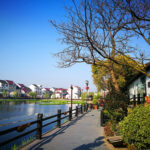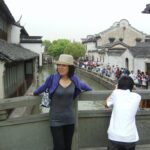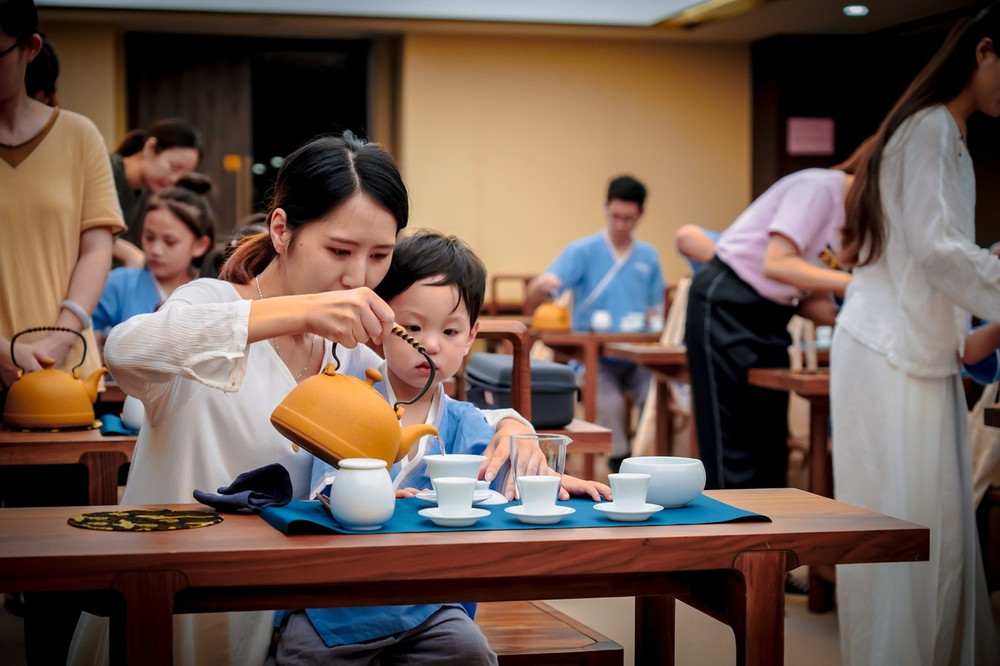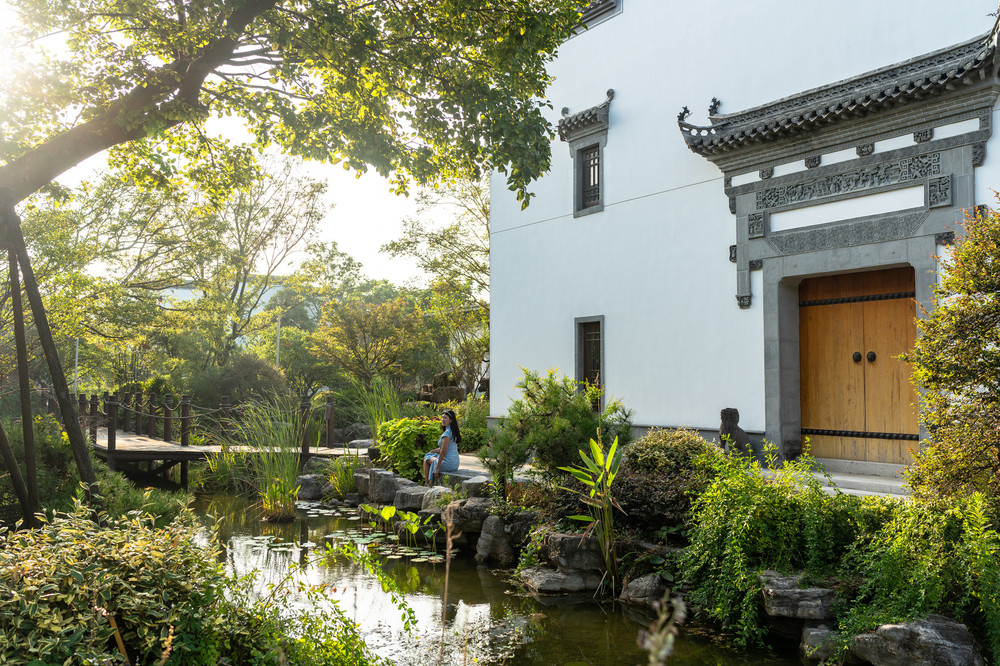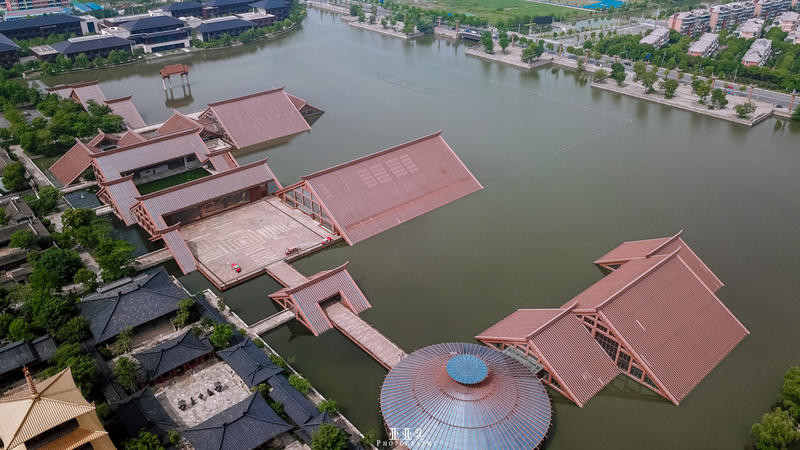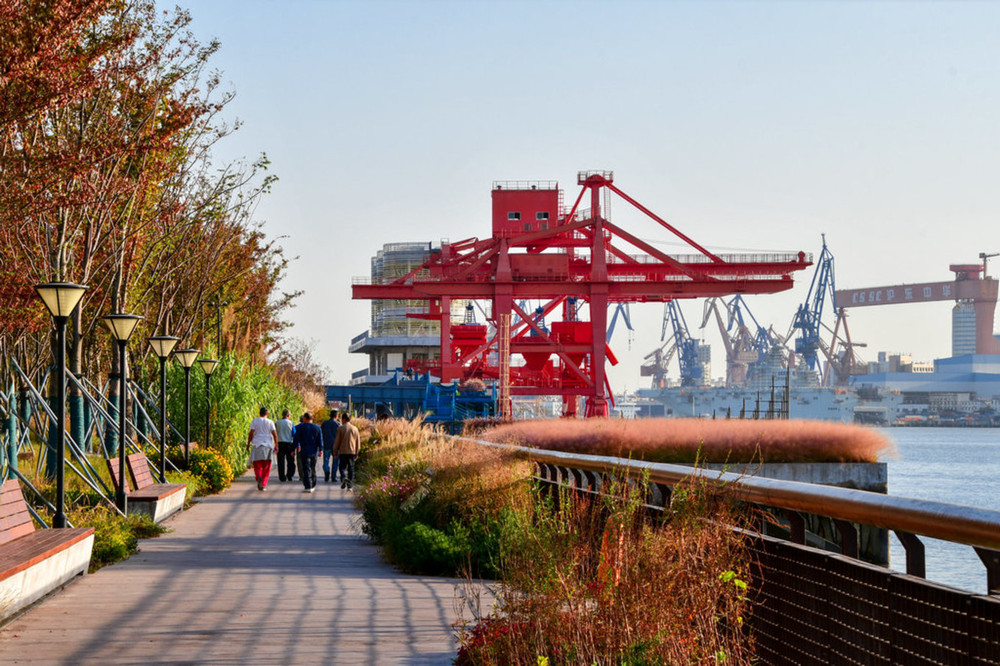Duration: 1 day. The author visited these places: Yunxiang Temple, Nanxiang Ancient Town, Shanghai. Published on 2010-07-07 22:57.

“A thousand miles of orioles singing, green reflects red; by water villages and mountain townships, wine flags sway in the wind. In the Southern Dynasty, there were four hundred and eighty temples, how many pavilions and towers are shrouded in mist and rain.” — ‘Spring in the South of the Yangtze’ by Du Mu, Tang Dynasty.
Yunxiang Temple, also known as the White Crane Nanxiang Temple, was originally established in the fourth year of the Tianjian era during the reign of Emperor Wu of Liang in the Southern Dynasties, and has a history of fifteen hundred years.
Last weekend, on a whim, I visited this ancient temple located in the ancient town of Nanxiang. Upon entering the mountain gate, I couldn’t help but pause. I’ve visited many temples, and according to the usual custom, the mountain gate leads to the Hall of the Heavenly Kings, where the future Buddha Maitreya is enshrined in the front, flanked by the Four Heavenly Kings, and behind Maitreya is the protector Vajrapani. But here… why is the Maitreya with the big belly and ever-smiling mouth missing? Instead, there is a serene-faced Bodhisattva holding a lotus flower. The Four Heavenly Kings are not standing on either side, but two fierce Vajra warriors with furrowed brows. If it weren’t for the unchanged image of Vajrapani behind, I would have doubted whether I was in the wrong place. However, after reading the introduction, I learned that the image of Maitreya during the Tang Dynasty was indeed like this.Alas, being accustomed to the布袋和尚, I was really taken aback for a moment. The main hall, naturally enshrining the Bodhisattva Guanyin, is the Hall of Guanyin. But the Guanyin inside is not the common image in white, holding a willow branch and a vase of pure water. Instead, it is a statue of the Thousand-Armed Guanyin with four faces. The Bodhisattva’s face is serene and dignified, with a thousand eyes observing the world and a thousand hands protecting all beings, fully displaying a solemn and compassionate demeanor.
The Four Heavenly Kings have been moved from the Hall of the Heavenly Kings to the Hall of Guanyin. The four kings are not holding the swords, pipas, umbrellas, and flowered minks that represent good weather and prosperity. Instead, they hold spears and short swords, treading on evil spirits. The fierce and valiant demeanor of the Heavenly Kings contrasts sharply with the compassionate and peaceful demeanor of the Bodhisattva.
When I arrived at the main hall, I finally breathed a sigh of relief. Fortunately, the Mahavira Hall has not changed, enshrining the Three Buddhas of the Horizontal World: the Medicine Buddha of the Eastern Pure Land, the Sakyamuni Buddha of the Saha World, and the Amitabha Buddha of the Western Pure Land. On both sides, the eighteen Arhats are also enshrined, with smooth lines and lifelike statues. At that time, I was so fascinated that I lingered and didn’t want to leave.
Later, after reading the introduction, I found out that the origin of these eighteen Arhats is quite extraordinary.Visiting Yunxiang Temple, one must not miss the eighteen Arhats cast in pure copper, which are treasures from the Qing Dynasty and donated by the collector Mr. Wang Xiangdong. Speaking of which, I was nearly left speechless by the large 108 square meter color mural ‘Sakyamuni Preaching’ behind the main hall. Sakyamuni sits on a lotus platform preaching to the public, surrounded by Kasyapa, Ananda, various Bodhisattvas, children, Arhats, Heavenly Kings, and Vajra gods. The upper part of the painting features flying immortals scattering flowers, with peacocks, phoenixes, and lotuses interspersed among them. The entire picture is magnificent and vivid, effectively presenting the colorful Buddhist world.
On both sides of the main hall, you’ll find the precious halls of Manjusri Bodhisattva and Samantabhadra Bodhisattva, both of considerable scale. However, I am somewhat puzzled by the absence of the Ksitigarbha Hall for Ksitigarbha Bodhisattva, one of the four great bodhisattvas. Typically, in temples of sufficient scale, the first side hall at the mountain gate would be the Ksitigarbha Hall. Here, it has been replaced by the hall of Mahasthamaprapta Bodhisattva, who is part of the Western Trinity. Despite my puzzlement, I don’t dwell on it for too long.
By now, it is nearly noon, and the sun is extremely harsh. Seeking a shady place to rest, I notice a door open under the main hall from which cool breezes are blowing.As I approach and take a look, it seems to be a basement. So I casually walk down. It turns out that inside is the Hall of Ten Thousand Buddhas supported by believers. Walking further inside, ah, isn’t this holy statue of a bhikkhu holding a staff, elegant and serene? Exactly the Ksitigarbha Bodhisattva that I have been searching for for a long time. I look around. I really have to admire the ingenious mind of the designer. Using this underground merit room as the Ksitigarbha Hall is really most appropriate. It is extremely in line with the identity of the leader of the underworld.
After this tour, whether in terms of temple layout or Buddha statue modeling, Yunxiang Temple has surprised me too much. Later, after listening to the introduction of the mage in the temple, I learned that both the architecture and Buddha statue style of Yunxiang Temple are imitations of the Tang Dynasty style. Moreover, it is said that in order to strive for authenticity, they specially went to Japan to refer to the Toshodai Temple.
There are numerous pavilions and lush green trees in the temple, all showing the majestic and grand style of the prosperous Tang Dynasty. There are many temples in Shanghai. Some are large in scale, and some have a long history. However, Yunxiang Temple combines both, and its unique style is really worth a visit.
